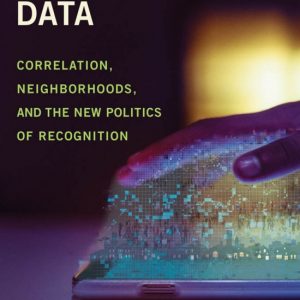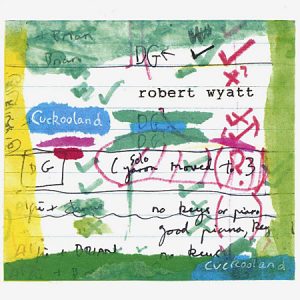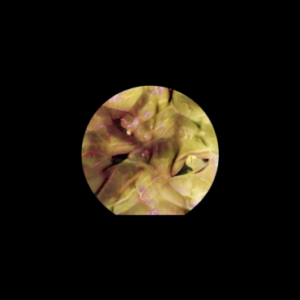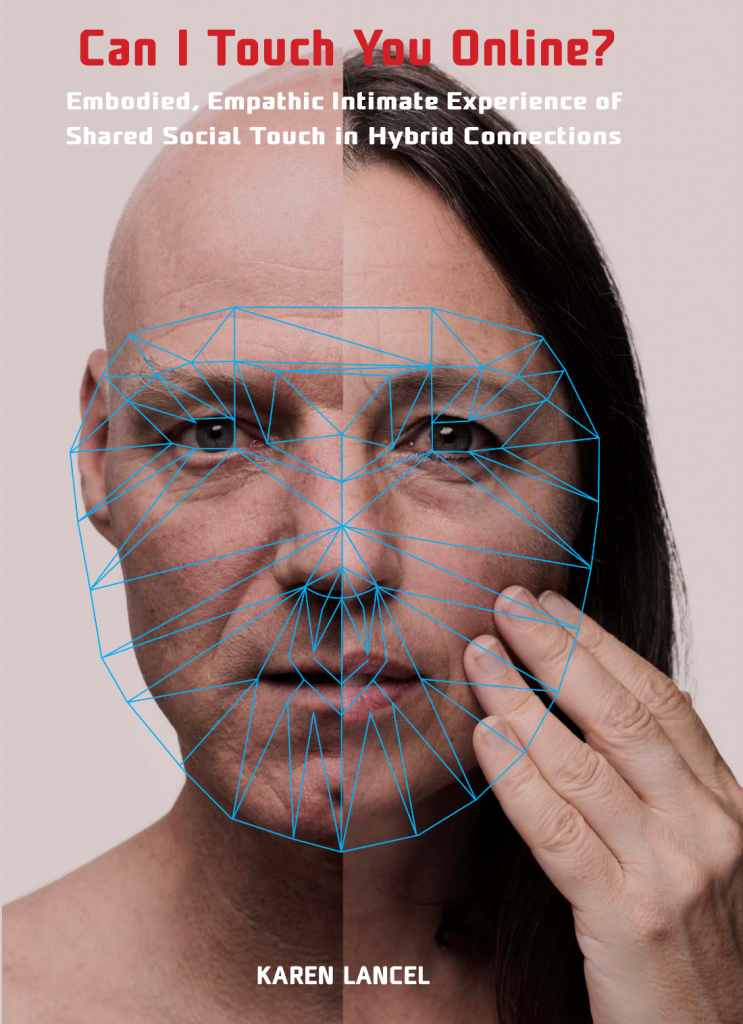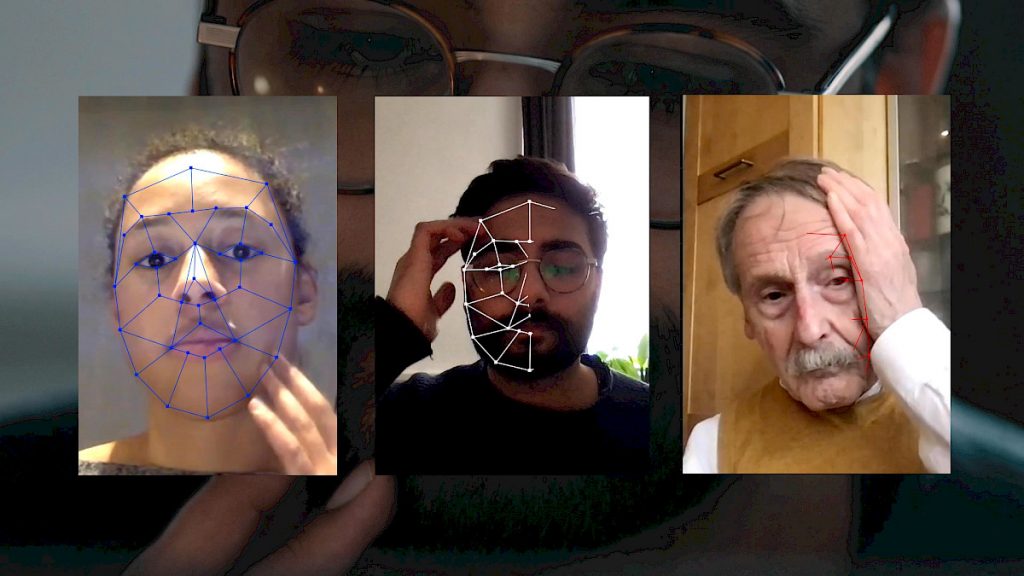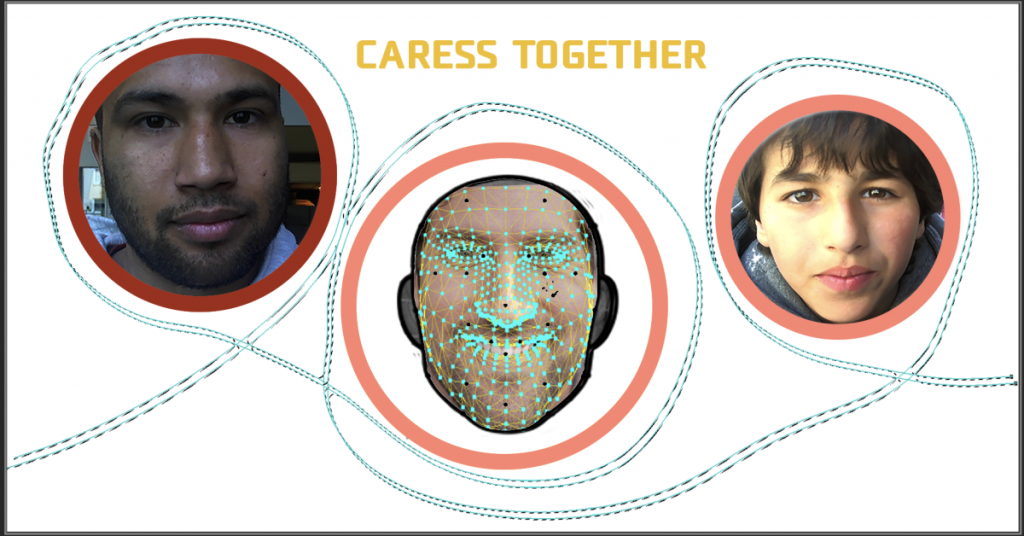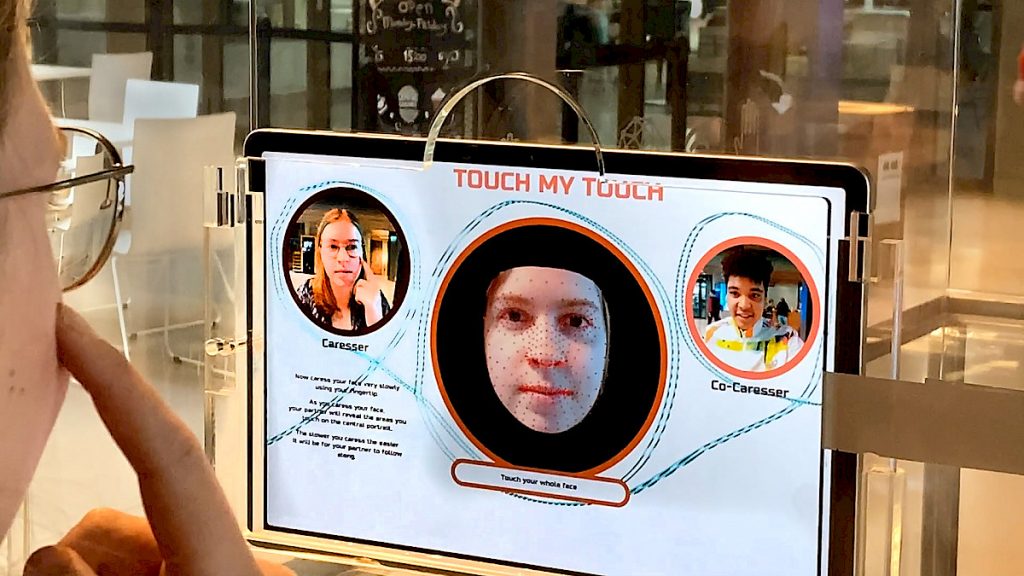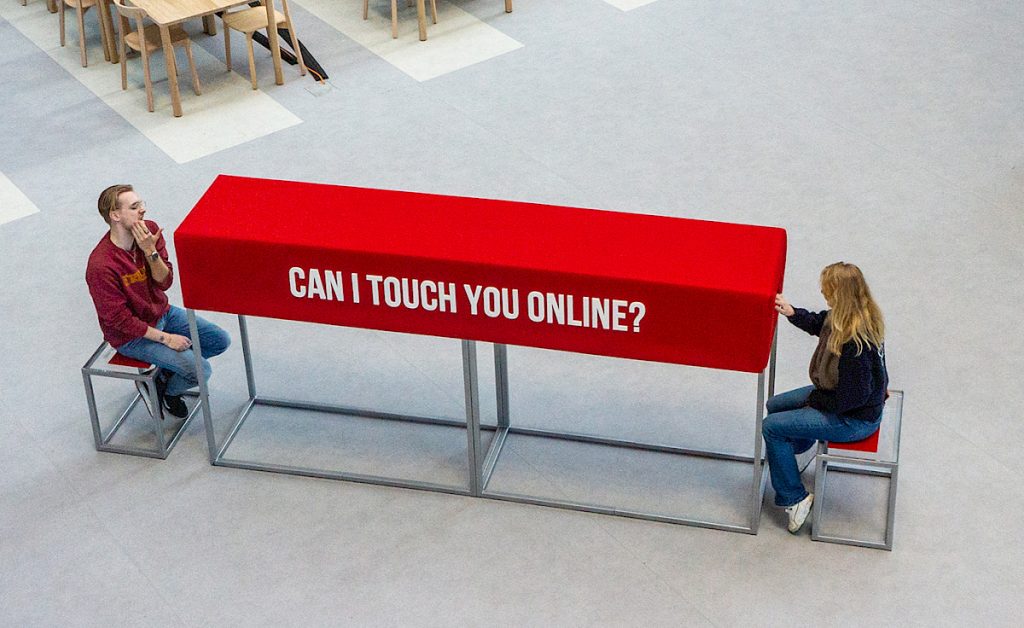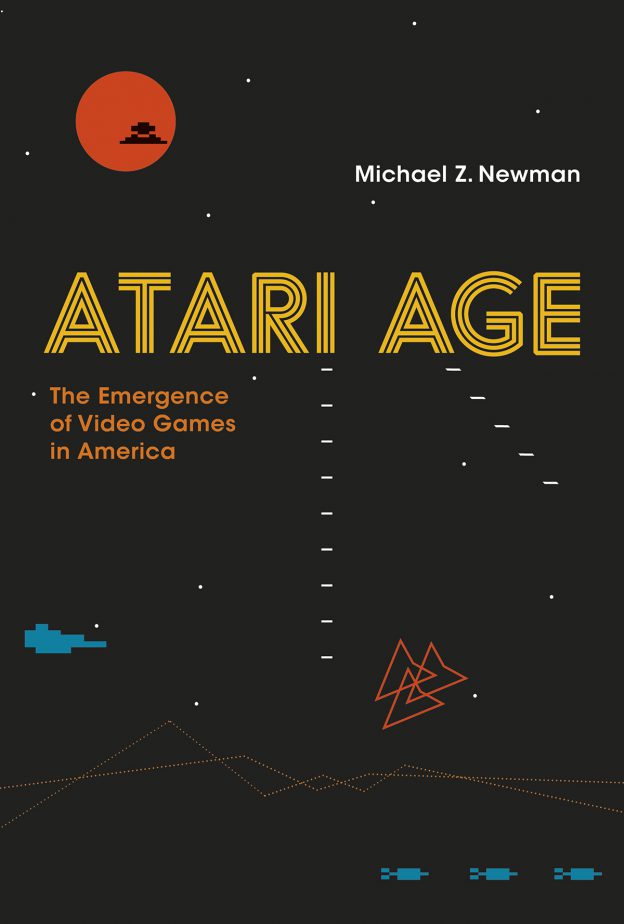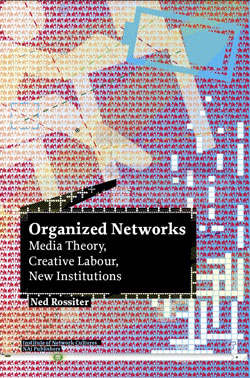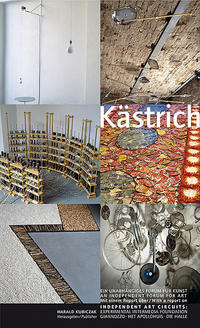Karen Lancel - Can I Touch You Online?
Embodied, Empathic Intimate Experience of Shared Social Touch in Hybrid Connections.
Karen Lancel and her companion Hermen Maat have a mission. “We show intimate data in public. Mediated intimacy needs public dialogue.” They create public intimate settings, provoke new connections, authorship and shared, critical reflection on experience of embodiment in merging realities, and call for an innovative aesthetic AI approach to experience of intimate and empathic connections.
The artists deconstruct bio-metric control technologies to create and share a poetic ‘meeting-through-touching’ ritual and dialogue. This was done through several installations and performances presented at Venice Biennale 2015, BCAC Beijing 2016, TASIE Beijing – Amsterdam – Istanbul – Stockholm – Berlin-Dessau. In these projects, that won awards worldwide, participants are invited to caress their own faces, to connect with others worldwide, to endlessly meet, caress, mirror and merge.
This book, published by Lancel as her dissertation for a doctor degree at Delft University of Technology, is a sublimation of this mission and expands the research into “a new, interdisciplinary Art, HCI, Design and Neuro Science perspective, for distributed, hybrid, XR, online, human-agent and robot interaction.
Published in 2023, Paperback, 260 pages.
Table of Contents
PART 1
1 INTRODUCTION
Intimate Experience of Social Touch
Touching Digital Others
1.1.3 Digital Others in Co-existence
1.1.4 Touching Hybrid Bodies
1.2 Research Philosophy
1.3 Research Method
1.3.1 Characteristics of Research through Design
1.3.2 Application of the Research Methods
1.4 Knowledge Gap
1.5 Research Question and Sub-questions
1.6 Outline thesis
1.7 Publications
PART 2
2 LITERATURE
2.1 Shared Embodied Intimate Experience of Technically Mediated Social Touch, for Multiple
Participants
2.1.1 Physical Social Touch
2.1.2 Technically Mediated Social Interaction
2.1.3 Shared Intimate Experience
2.1.4 Technically Mediated Shared Spaces, with Multiple Participants
2.2 Empathy in Technically Mediated Social Touch Interaction
2.2.1 Cognitive Empathic Processes in Interaction
2.2.2 Physiological Empathic Processes in Social Touch Interaction
2.2.3 Body-centred Response to Motor Data Interaction
2.3 Interactive Media Performance Art of Shared Social Touch Experience
2.3.1 Characteristics of Orchestration
2.3.2 Characteristics of ‘Disruption’
2.3.3 Artistic Orchestrations, of Visuo-haptic Motor Data Interaction for Social Touch
Knowledge Gap and Statement
3 INTERACTION MODEL ‘CAN I TOUCH YOU ONLINE?’
3.1 Essential Elements in the CITYO Interaction Model
3.2 Interaction Model for Shared Social Touch
3.3 Legenda Explanation, of the CITYO Interaction Model
PART 3
4 ARTISTIC SOCIAL LABS
4.1 Orchestrations of ‘Artistic Social Labs’ (ASL)
4.2 ASL Design in Line with the Interaction Model
4.2.1 Sensory Disruption
4.2.2 Shared Reflection
4.3 Shared Data Compositions, for Sharing Artificial and Emotional Intelligence
4.3.1 Privacy of Data and Trust
4.4 Performance Scripts and Performative Phases
4.5 Overview of research aspects, included in Chapters 5-9.
5 ASL 1: SAVING FACE
5.1 Background Literature: Interactive Media Performance Art in the Smart City
5.2 Orchestration ASL1 ‘Saving Face’, 3 x in City Public Space
5.3 Interaction model ASL1
5.3.1 Design Choices ASL1
5.3.2 Design Rationale ASL1
5.4 Performance Script ASL1
5.5 Results, Discussion ASL1: Utrecht (2012)
5.5.1 Results ASL1 Utrecht
5.5.2 Discussion ASL1 Utrecht
5.6 Results, Discussion ASL1: Berlin/Dessau (2013)
5.6.1 Discussion ASL1: Berlin/Dessau
5.7 Results, Discussion ASL1: Beijing (2015)
5.7.1 Results ASL1 Beijing
5.7.2 Discussion ASL1 Beijing
5.8 Conclusion ASL1: Utrecht, Dessau/Berlin, Beijing
5.9 Hosting of Shared Reflection Design, in 3 ASLs
5.9.1 Research Context
5.9.2 The Role of Hosting, Compared in 3 ASLs
5.9.3 Results ASL1 Berlin/Dessau, ASL1 Beijing and ASL Master Touch
5.9.4 Discussion ASL1 Berlin/Dessau, ASL1 Beijing, ASL Master Touch
5.9.5 Conclusion ASL1 Berlin/Dessau, ASL1 Beijing, ASL Master Touch
5.10 Conclusion ASL1, in relation to the CITYO Interaction Model
6 ASL 2: TOUCH MY TOUCH
6.1 Orchestration ASL2: ‘Touch My Touch’ (2021)
6.2 Interaction Model ASL2
6.3 Design Choices ASL2
6.4 Performance Script ASL2
6.5 Results ASL2
6.5.1 Method
6.5.2 Results
6.6 Discussion ASL2
6.6.1 Discussion, based on the Meaning of ‘Intimate’ in the Interaction
6.6.2 Discussion, based on the Meaning of ‘‘Shared Embodied Experience’’ in the Interaction
6.7 Conclusion ASL2
6.8 Conclusion ASL2, in relation to the CITYO interaction model.
7 ASL 3: TELE_TRUST
7.1 Orchestration ASL3 Tele_Trust (2009)
7.2 Interaction Model ASL3
7.3 Design Choices ASL3
7.4 Design Rationale
7.5 Performance Script ASL3
7.6 Conclusion ASL3, in relation to the CITYO Interaction Model.
8 ASL 4: EEG KISS, DIGITAL SYNAESTHETIC EEG KISS
8.1 Background Literature: Artistic Brain Computer Interfaces
8.2 Two Orchestrations ASL4 EEG KISS: EEG KISS, Digital Synaesthetic EEG KISS
8.3 Interaction models ASL4
8.4 Design Choices ASL4: EEG KISS, Digital Synaesthetic EEG KISS
8.4.1 Data-visualization
8.4.2 Data-sonification
8.4.3 The Host
8.5 Performance Script ASL4
8.6 Results and Discussions of ASL4 Orchestrations
8.6.1 Results, Discussion: ASL4 EEG KISS (2014)
8.6.2 Results, Discussion: ASL4 Digital Synaesthetic EEG KISS (2016)
8.7 Conclusion ASL4 and Future Research.
8.8 Conclusion ASL4, in relation to the CITYO Interaction Model.
9 ASL 5: KISSING DATA SYMPHONY ASL 6: INTIMACY AGENTS
9.1 Orchestration ASL5: Kissing Data Symphony (2018)
9.1.1 Interaction Model ASL5
9.1.2 Design Choices ASL5
9.1.3 Performance Script ASL 5
9.2 Orchestration ASL6: Intimacy Agents (2020), Online Multi-BCI
9.2.1 Interaction Model ASL6
9.2.2 Design Choices ASL6
9.2.3 Performance Script ASL6
9.3 Results and Combined Discussion ASL5 and ASL 6
9.3.1 Results ASL5 ‘Kissing Data Symphony’ (2018)
9.3.2 Results ASL6 ‘Intimacy Agents’ (2020)
9.3.3 Discussion ASL5 and ASL6
9.4 Conclusion ASL5 and ASL6; Current and Future Research.
9.5 Conclusion ASL5 and ASL6, in relation to the CITYO Interaction Model
10 DISCUSSION ON FINDINGS AND INSIGHTS FROM THE ASLS, IN RELATION TO THE
CITYO INTERACTION MODEL
10.1 Overview of ASL orchestrations and CITYO interaction models
10.2 Findings and Insights found in the ASL Orchestrations
10.2.1 Sensory Disruption
10.2.2 Shared Reflection
10.3 Discussion on Findings and Insights ………..
PART 4
11 GENERAL DISCUSSION AND CONCLUSION
11.1 QR 1: “Which characteristics are essential to shared embodied intimate experience of social
touch for multiple participants?”
11.2 QR 2: “Can an interaction model for shared intimate experience be designed, to orchestrate
technically mediated social touch for multiple participants and how?”
11.3 QR3: “Can this interaction model be used, a) to describe and analyse, and b) to artistically orchestrate
shared embodied intimate experience of technically mediated social touch for multiple participants, and
how?”
11.4 QR4: “Can findings and insights be formulated, on the basis of these studies, for the design of shared
intimate experience of technically mediated social touch for multiple participants?”
11.5 Conclusion ….
11.6 Discussion: Limitations and Concerns
11.7 Future Research
LIST OF PUBLICATIONS
€20.00

